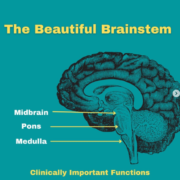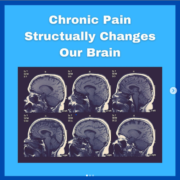The Beautiful Brainstem

The Beautiful Brainstem
The brainstem is arguably the most important area of the brain in terms of keeping us all alive. Most medically educated people know that the Brainstem is tied heavily towards our ability to breathe and maintain heart rate.
But the Brainstem does so much more! It’s a bottleneck point for neural transmission the entire body, so lesions of the Brainstem can impact any other part of the body.
When we look at the function of the Brainstem, we usually separate the anatomy into 3 regions.
• Midbrain
• Pons
• Medulla



By knowing the function of each region, we can examine a patient and get a sense for any possible dysfunction, especially when we evaluate a patient’s cranial nerves.
A patient with impaired ability to move their eyes up and down may have midbrain dysfunction. A patient with issues with their face/jaw may have a problem at the Pons. A patient with nausea signs and balance problems likely has issues in the medulla.
By understanding these issues, it can help us see if a patient has a serious , life threatening issue that needs special tests or referrals. It can also help us design rehab for patients if these issues aren’t pathological.
Either way, looking at the anatomy and physiology of the Brainstem can create a sense of awe, as you understand that this small chunk of brain is responsible for so much of what makes us alive.






